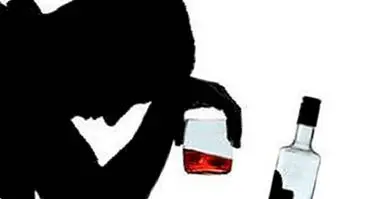Behavioral Therapies: first, second and third wave
Throughout the history of psychology, there have been many approaches and theories that have arisen with the aim of explaining how the human mind works, what psychological mechanisms influence and participate in our behavior and even how they can be altered in a that maladaptive thought patterns and behavior occur in the form of mental disorders.
At the level of clinical psychology, attempts have been made to help those suffering from disorders and maladaptive patterns and producers of discomfort through what is known as behavior therapy and the three waves or generations of treatments that has been producing .
Behavioral therapy: a brief definition
We call behavior therapy at type of treatment based on experimental psychology in which it is considered that the behavior, although predisposed by biology, is determined and can change by learning and applying patterns of behavior and thought.
In the presence of maladaptive behaviors and generate significant discomfort in the person, it is possible to modify these patterns by teaching others more useful.
In this way, the general objective of this type of therapy is to generate a change in the person who can alleviate their suffering and improve their adaptation , enhancing and optimizing their skills and opportunities in the middle. For this, it is intended to eliminate, add or change one or more behaviors to the individual's repertoire through learning processes.
This type of therapy focuses on the present moment, working on the current problem and being history only something that informs us of how the current situation has been reached. The psychotherapist will apply the treatment according to the characteristics of the subject to be treated and their circumstances, having to adapt the therapy to each situation.
The three waves or generations of therapies
While many of the techniques and therapies applied have been ongoing since behavior or behavioral modification therapies made their appearance, behavioral therapy has not stopped evolving in order to improve both its effectiveness and the understanding of the mental and behavioral processes on which it works.
So far, you can talk about a total of three large waves or generations of therapies that have happened in time as one or another current of thought predominated, each of them surpassing many of the explanatory and methodological limitations of the previous models.
1. First wave: Behavioral therapies
Behavioral therapy was born at a moment in the history of psychology in which behaviorism emerged with force as a reaction to psychoanalytic therapies born with Sigmund Freud. The latter focused on hypothetical constructs not empirically testable, and considered that behavioral disorders were the expression of poor resolution of unconscious conflicts related to the repression of instincts and needs.
However, behavioral models opposed these considerations, preaching the need to deal with disorders based on verifiable and testable data . The behaviorists focused on treating the behavior present at the time of the problem, worrying about the relationships between stimuli, the reactions and the consequences of these.
The methodology of the first wave
The behavior was understood as mediated mainly by the association between stimuli and the consequences of the answers given to them. The therapies that appeared in this period are based on conditioning , working aspects such as the association of stimuli, habituation or sensitization to them or the extinction of reactions to stimuli. First order changes in behavior are caused, working on directly observable behavior.
Some of the treatments belonging to this first generation of behavioral therapies that are still applied are exposure therapies, differential reinforcement of behaviors, aversive techniques, shaping, systematic desensitization or the economy of cards and the behavioral contract (if well now they are applied accompanied by more cognitive treatments).
The proposals of the first wave of Behavioral Therapies were used and continue to be used for the treatment of phobias, to create or restore behavioral patterns and / or to train people with reduced abilities.
The behavioral model was for a long time the prevailing paradigm in the field of psychology and the treatment of certain mental disorders.However, their conception and usefulness are limited: these treatments are only successful in specific circumstances and contexts in which the variables that have to do with behavior can be manipulated, and have little regard for the effect of psychological variables such as cognition or cognition. affected.
The main problem of behaviorism is that although it recognizes the existence of an intermediate element between stimulus and response , due to the lack of empirical data this point was ignored and considered an inexplorable black box. For these reasons, another trend arose over time that attempted to make up for the shortcomings of this model.
2. Second wave: Cognitive-behavioral therapies
The lack of response to multiple questions about the processes that mediated between perception and reaction and the ineffectiveness of purely behavioral therapies on many disorders with an affectation more specific to the content of thought led many experts consider that behaviorism was not enough to explain and produce a change in behavior derived from elements such as convictions or beliefs.
At this point it began to be considered that the main element that originates the behavior It is not the association between stimuli but the thought and processing that is done of the information , the cognitive and information processing theories are born. That is, the second wave of Behavioral Therapies.
From this perspective it was considered that anomalous patterns of behavior are due to the existence of a series of distorted and dysfunctional schemes, structures and thought processes, which cause a great amount of suffering to those who experience them.
The drivers of the second wave of therapies do not rule out the importance of association and conditioning, but consider that therapies must be directed modify dysfunctional or deficit beliefs and thoughts . Thus, this current has in fact incorporated many of the behavioral techniques into its repertoire, although giving them a new perspective and adding cognitive components. From this combination emerged cognitive-behavioral therapies.
Emphasizing mental processes
Within this paradigm great attention is paid to the degree of effectiveness of the treatment, maximizing it as much as possible, although at the cost of spending less effort to know why it works.
This second wave presents a much higher success rate than the rest in a large number of disorders , being in fact the cognitive-behavioral paradigm one of the most prevalent at the level of clinical psychology at present. The objective is to change the cognitions or emotions that cause the maladaptive behavior, either by restricting or modifying them. Some of the best-known behavioral therapies at a general level are typical of this period, such as Aaron Beck's Cognitive Therapy for depression, self-instruction therapy or Rational Emotive Therapy by Albert Ellis, among others.
However, despite its clinical success this type of therapies also has some problems. Among them, the fact that it tends to try to eradicate everything that generates discomfort , without taking into account that eliminating all the negative can cause patterns of rigid behavior that in turn can be maladaptive. In fact, the attempt to control may end up prompting effects contrary to what was intended.
The second wave of therapies also has the added difficulty that having focused so much on making therapies effective by neglecting the study of why causes n or it is well known which parts of the process produce exactly a positive change . Finally, generalize the results of this therapy to the usual context of the patient's life and keep them complicated, and problems such as relapses appear with some frequency
These problems have caused the relatively recent birth of new therapies who try to give an account from a renewed perspective; it is the third wave of Behavioral Therapies.
Third wave: Third generation therapies
This is the latest wave of behavior modification therapies. They are considered to belong to these third-generation therapies those elaborated under the perspective of the need to establish a more contextualized and holistic approach of the person, taking into account not only the symptoms and problems of the subject but the improvement of the vital situation and the connection with the environment, as well as the generation of a real and permanent change in the individual that allows the definitive overcoming of the malaise.
This type of Behavioral Therapies considers that psychological problems are due in large part to the sociocultural and communicational context of the individual , and the fact that a given behavior is considered normal or aberrant. More than in the fight against symptomatology, therapy should focus on redirecting and refocusing the individual's attention towards important goals and values, improving the psychosocial adjustment of the person.
A therapeutic perspective focused on the context
From the therapies of third generation a change is sought at a deep level , entering more into the core of the person and less into the concrete situation of the problem, which helps to make the changes produced more permanent and significant. The third wave also focuses on providing a better understanding and legitimation of the symptoms. Also, the objective stops being to avoid the discomfort or the negative thoughts at all costs to go to help the subject to be able to vary the type of relation and vision that he has of himself and of the problem.
Another element to highlight is the importance given to the therapist-patient relationship, which is considered that it can by itself produce changes in the subject's situation. Through the communication between both seeks to make the functionality of the behavior of the patient or client change, producing changes at a deep level.
Within this third wave we find therapies such as analytic-functional psychotherapy, dialectical behavioral therapy or Acceptance and Commitment Therapy. Mindfulness is also very relevant within this wave of therapies, although not as a type of therapy in itself but as a tool.
Bibliographic references:
- D'Zurilla, T.J. and Goldfried, M.R. (1971). Problem solving and behavior modification. Journal of Abnormal Psychology, 78, 107 & dash; 126.
- Hayes, S.C. (2004). Acceptance and commitment therapy, relational frame theory, and the third wave of behavioral and cognitive therapies. Behavior therapy, 35, 639-665.
- Mañas, I. (s.f.). New psychological therapies: The third wave of behavior therapies or third generation therapies. Psychology Gazette, 40; 26-34. University of Almería
- Oblitas, L.A. (2004). "How to do successful psychotherapy?" The 22 most important approaches in contemporary and cutting-edge psychotherapeutic practice. PSICOM Publishers. Bogotá D.C. Colombia. P. 146.
- Vila, J. and Fernández, M.C (2004). Psychological treatments The experimental perspective. Madrid: Pyramid.



















